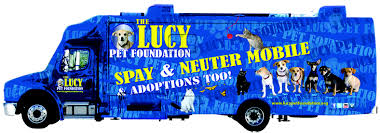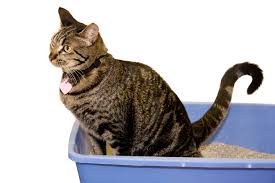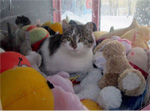Genius Idea For Shelter Pets
Kim Sill, Shelter Hope Pet Shop
 Actress Kim Sill is back to tell us about her latest project. She's putting adoption stores inside malls. Kim is saving hundreds of death row cats, dogs and bunnies by changing their adoption venue to the more appealing atmosphere and she can help you start one in a mall near you.
Actress Kim Sill is back to tell us about her latest project. She's putting adoption stores inside malls. Kim is saving hundreds of death row cats, dogs and bunnies by changing their adoption venue to the more appealing atmosphere and she can help you start one in a mall near you.
Shelter Hope Pet Shops, located in shopping malls, provide a fun, friendly place where visitors and volunteers can meet and interact with animals needing adoption. You can also visit Shelter Hope Pet Shops for pet merchandise and know your dollars are going directly back to help save the lives of homeless pets.
They currently have three locations and have saved over 2,000 death row dogs. One is located in Sacramento, another in Santa Clarita and the third one, and the one that Kim operates, is in Thousand Oaks, CA.
The dogs in the Shelter Hope Pet Shop in Thousand Oaks primarily come from the Los Angeles area. The Santa Clarita shop focuses on the Castaic and Lancaster areas. Kim states that they try to pull the dogs that are at the highest risk of being euthanized.
The purpose of Shelter Hope Pet Shop is to help animals get shown, because a lot of people don't like to visit shelters, because it is a sad place. The animals are then moved into malls, where people might be going to see a movie, they're happy and shopping, and then all of a sudden they come across a cute dog staring at them from a window and they have to go in and see them.
If you do decide to adopt one of these dogs, you will go home with everything you need, including a kennel, harness, leash, tag and a microchip. You will also receive the bedding that the dog has become familiar with, food, treats and toys. They will also give you a free vet visit as well as a free doggy daycare and a free training session with a trainer as well as a free grooming. Kim states that they do this because they want people to understand what it's like to own a dog and that it comes with responsibilities.
 If you are not in a position to adopt a dog, there are other things you can do to help, such as becoming a foster or a driver to transport them. You can also donate supplies such as dog beds and even printer ink. You can find a list of items on their door that they are desperately in need of, because they don't want to spend their money on these items, they want to save their money for the shelter dogs to get them out and even to spay or neuter them.
If you are not in a position to adopt a dog, there are other things you can do to help, such as becoming a foster or a driver to transport them. You can also donate supplies such as dog beds and even printer ink. You can find a list of items on their door that they are desperately in need of, because they don't want to spend their money on these items, they want to save their money for the shelter dogs to get them out and even to spay or neuter them.
Shelter Hope Pet Shops also give back to the community by providing free microchipping and free vaccinations.
So what happens to the dogs if they don't get adopted right away? Kim says they partner with boarding facilities and the dogs do not stay at the mall overnight. They also have foster homes and people willing to drive the animals to a foster home or a boarding facility, so that all of the dogs get to go home to a warm, comfy bed.
While Kim talks about Shelter Hope Pet Shops in California, she states that the program is available across the country. She is willing to sponsor the first year of insurance and help find a location for anyone across the nation that is a qualified 501(c)(3) non-profit organization and willing to do it like they do in California. This is considered a franchise, which is gifted, and then once they are up and running they can train with Kim or talk to her on a daily basis.
If you are interested in starting your own Shelter Hope Pet Shop, email Kim through her website, http://www.shelterhopepethop.org and let her know what you need, what locations you've seen that might work and she will help you get it off the ground. Once you're up and running, it will become yours. It will be your own sustainable non-profit pet shop.
http://www.shelterhopepetshop.org
The Vital Role of Dogs in the Search for Cancer Cures
Arlene Weintraub, HEAL
 We love our dogs. They sleep with us. They cuddle with us. They give us unconditional love. Now, they are doing even more. They are helping scientists discover many new ways to cure cancer. Nowadays doctors and veterinarians are working together to develop new cancer treatments.
We love our dogs. They sleep with us. They cuddle with us. They give us unconditional love. Now, they are doing even more. They are helping scientists discover many new ways to cure cancer. Nowadays doctors and veterinarians are working together to develop new cancer treatments.
Arlene Weintraub is a veteran health and science writer and has a new book out called, HEAL: The Vital role of Dogs in the search for Cancer Cures. Drawn from extensive research, on-the-ground reporting and personal experience, her book explores the fascinating role dogs are playing in the search for a cure for cancer.
You will find many different ways that dogs are helping in the fight against cancer in her book. Most people don't know that dogs develop many of the same types of cancer that humans do including breast cancer, lymphoma, osteosarcoma and gastric cancer. Dogs are now being recruited into clinical trials for new therapies that could end up helping both pets and people with cancer.
Some types of tumors in pets and people are so similar that scientists can't tell the difference when looking at them under a microscope. Melanoma is a good example. Dogs gets exactly the same melanoma that people get and have been very important in helping scientists make new discoveries.
Cats are also involved in this field of research, which is called comparative oncology. Cats actually get a form of breast cancer, or mammary cancer, which is very similar to triple negative breast cancer in women. This is the hardest type of breast cancer to cure. As a result, there is a growing interest in recruiting cats for breast cancer research.
Arlene tells is that cancer is a very prevalent disease in dogs, with an estimate of about 1 out of every 3 dogs dying of cancer. It is largely a disease of aging in dogs, just like in humans. However, there are some breeds that are more prone to the disease and can develop it quite young, including Golden Retrievers.
 Treatment for cancer in animals is pretty much the same as humans undergo, including chemotherapy and radiation. Surgery also can be quite effective in the treatment of cancer in dogs. Actually, the very first cancer drugs approved for dogs were approved in the last 5 to 10 years, so now there's an effort underway to tailor therapies for pets.
Treatment for cancer in animals is pretty much the same as humans undergo, including chemotherapy and radiation. Surgery also can be quite effective in the treatment of cancer in dogs. Actually, the very first cancer drugs approved for dogs were approved in the last 5 to 10 years, so now there's an effort underway to tailor therapies for pets.
Some companies have even started developing two drugs for cancer, one for people and one for dogs, based on the same science. In fact, Arlene mentions in her book that the first ever cancer drug approved for dogs also has a version for people too.
There is also a chapter in Arlene's book on dogs being able to sniff out cancers in humans. She states this is a very exciting branch of research and many scientists around the world have proven that they can train dogs to detect tumors. They can also train them to smell the difference between cancerous tissue and normal tissue. There is now an effort underway to translate that into diagnostic device for early detection, because it wouldn't be too practical to have dogs in every hospital in the world.
Arlene wrote the book after losing her sister to gastric cancer, and takes her own personal journey from grief to healing, as she shows her readers how man's best friend might be the key to unlocking the mysteries of cancer.
Arlene feels that anyone who has either experienced cancer in a family member or their dog will find some hope in cancer research by reading her book.
Arlene Weintraub is a veteran health and science writer who has contributed to such publications and websites as US News & World Report, Forbes.com and the New York Times, and was a staff writer for BusinessWeek for 10 years. She is also the author of Selling the Fountain of Youth.
http://arleneweintraub.com
TOXIC LOVE: Valentine Dangers
Doc Halligan, Lucy Pet Foundation
 While you may not associate Valentine's Day with pet dangers, Doc Halligan from the Lucy Pet Foundation thinks you should be extra cautious. She sees more animals the day after Valentines (only third after Christmas and Halloween), usually because pets swallow something they shouldn't have.
While you may not associate Valentine's Day with pet dangers, Doc Halligan from the Lucy Pet Foundation thinks you should be extra cautious. She sees more animals the day after Valentines (only third after Christmas and Halloween), usually because pets swallow something they shouldn't have.
Love is in the air and everywhere you look you will find advertisements for gifts to your Loved one. Now I don't want to spoil the mood but these very gifts meant to entice your sweetheart can cause your pet great harm. So here are some Valentines Safety tips to protect your "furry" loved one this Valentines Day.
Tip # One:
As surprising as it may be, pets love undergarments. The more fancy the better and especially after you've worn them. It's true, every year dogs and cats undergo extensive surgery to remove leopard or heart-printed panties and bras from cats and dogs. The problem starts after that sizzling romantic interlude where panties, bras, etc., are ripped off and thrown on the grown. Along comes Fido or Morris, who wanting to get involved in all the excitement, start playing with these TOYS and the next thing you know they have swallowed them. But when ingested, lingerie causes bowel or stomach obstructions, which can be deadly and must be surgically removed by your veterinarian. So, the points here is go ahead and have that passionate interlude but remember to pick up your undergarments before your cat or dog has time to get to them.
 Tip # Two:
Tip # Two:
Not only will pets eat undergarments, but they also love things that sparkle. Diamond bracelets, rings, necklaces, etc., will often end up in your pet's stomach if you're not careful. Luckily most of these items will pass through your pet and be eliminated without too much harm to your pet or the jewelry. The only thing is that you have to search for it through, you guessed it, in your pets stool. So a jewelry box is a good investment and if your loved one pops the question this Valentines Day, keep the diamond on your finger to avoid an engagement at the vet clinic.
Tip # Three:
Love letters are abounding this month with fancy paper and pen. But like all paper objects, puppies, kittens, cats and dogs will chew eat and swallow through most of the best and romantic phrases to cause stomach upset and even intestinal obstructions. Most of the time pets will pass the paper and the only harm comes from the loss of some pretty romantic verse but it is better to store your love notes, etc., in a safe place away from your four-legged friends.
Tip # Four:
Planning a nice candle lit dinner for your loved one. That's great, but cats and dogs are intrigued by the dancing flames and not only will whiskers get burned but sometimes the hot wax will burn even the cutest paws and face. So just be careful and monitor the candles and try to keep them away from any curious pets in the household.
Tip # Five:
Roses are red violets are blue, watch out kitty some flowers are dangerous to chew! That's right certain plants and flowers are toxic to your pets. And the freshness packets that come with some floral arrangements seem quite interesting and even tasty to your cat and dog causing serious stomach upset. The best thing is to keep all of your beautiful floral arrangements away from your pets by placing them up high where your pets can't taste them. Remember anything new in the household is up for examination and scrutiny by your curious furry loved one.
 Tip # Six:
Tip # Six:
Chocolate is the food for lovers but it is very toxic to dogs and even a small amount can cause serious consequences and even death. Those cute heart-shaped kisses can be the kiss of death for your dog because chocolate contains methylxanthine alkaloids in the form of theobromine and caffeine that causes constriction of arteries, increased heart rate, and central nervous system stimulation. This can lead to vomiting, diarrhea, restlessness, increased urination and eventually cause excitability, increased respirations and heartbeat, stiffness, seizures, and exaggerated reflexes. Certain types of chocolate contain higher amounts of this alkaloid; baking chocolate is the highest with white chocolate being the lowest. A potential lethal dose in a fifteen-pound dog is only one pound of milk chocolate. Cardiac failure, seizures, coma and even death can occur if the pet is not treated within four to six hours after ingestion. So be very careful with all of your Godiva chocolates and Hershey's kisses and remember to contact your vet immediately if you suspect your pet has gotten into the "sweets."
The Mission of The Lucy Pet Foundation is to reduce pet overpopulation by having mobile spay/neuter clinics across the country and to support causes that benefit animal welfare. The Lucy Pet Foundation currently has two buses that travel around Southern California focusing on spaying and neutering. These buses are state of the art surgery units. Their next focus is in generating more funds to expand the work of these buses and have more across the country.
 The Lucy Pet Foundation not only offers free and reduced spays and neuters, they also do microchipping, vaccines and de-wormings. Spaying and neutering is not only great for pet population control, but it has been proven that an animal will live on an average of 40-percent longer after having this surgery.
The Lucy Pet Foundation not only offers free and reduced spays and neuters, they also do microchipping, vaccines and de-wormings. Spaying and neutering is not only great for pet population control, but it has been proven that an animal will live on an average of 40-percent longer after having this surgery.
Upcoming February Events
Free Spray & Neuter for Los Angeles City Residents! Here is a list of upcoming free or reduced fee mobile spay and neuter clinics in California:
Call for more information, questions and to reserve space to get on the list: (855) 499-5829
February 16, 23: West Valley Shelter, 20655 Plummer Street, Chatsworth, CA Spay/Neuter Clinic - 7:30 am; Vaccine Clinic 10:00am-2:00pm
February 19, 26: Hansom Dam Recreation Center, 11480 Foothill Blvd., Los Angeles, CA Spay/Neuter Clinic - 7:30 am; Vaccine Clinic 10:00am-TBA
February 21: Palmdale Development Services Parking Lot, 38250 Sierra Highway, Palmdale, CA Spay/Neuter Clinic - 7:30 am; Vaccine Clinic 10:00am-2:00pm
February 25: South Central (call for location 1-855-499-5829) Spay/Neuter Clinic - 7:30 am
Remember, you must get on a list to have your pet seen at these locations. Please call The Lucy Pet Foundation toll free at 1-855-499-5829 or Email: Info@lucypetfoundation.org to schedule an appointment, or register at the events.
See the current list of clinics at http://www.lucypetfoundation.org.
http://www.lucypetproducts.com
5 Things We Do To Show Our Pets How Much We Love Them
Robert Semrow, Animal Radio Listomania
It's Robert Semrow, your pet world insider here with this week's Animal Radio Listomania.
It's February and love is in the air. While you are showering loved ones with gifts, don't forget your pets. That's right, your pets deserve some special attention and gifts as well. The good thing is that your pets most certainly won't benefit from diamonds or chocolates, so you'll be able to keep it simple, but very effective.
 1 - Hugs, kisses, ear and belly rubs galore. Depending on the pet you have, you may use any of the aforementioned ways to show your pet you love them. Keep in mind, not every pet enjoys being hugged, but most do love getting some kind of petting, scratching or rubbing. There's nothing like a good 10-minute belly rub session. It doesn't cost you a dime, but it's priceless for the pet that you are giving it to.
1 - Hugs, kisses, ear and belly rubs galore. Depending on the pet you have, you may use any of the aforementioned ways to show your pet you love them. Keep in mind, not every pet enjoys being hugged, but most do love getting some kind of petting, scratching or rubbing. There's nothing like a good 10-minute belly rub session. It doesn't cost you a dime, but it's priceless for the pet that you are giving it to.
2 - Engage your pet in one of their favorite activities till they say enough, which may be a very long time for some. Play ball till they say, "If you want it, you fetch it," or if you've got a pet that loves to go on long walks or hikes, make that your goal. It's not always about the length of the walk either, sometimes it's challenges and abundant smells or even just letting them lead the walk they want to. If you have an inside pet, get creative and create and obstacle course or play stations to actively engage your pet for hours and they will be enthralled by the effort you've put in.
3 - Special Treats - we all have a favorite meal, snack or treat. It's special for a reason because we don't give it to the everyday and often it's not the healthiest meal or treat they get either. But on a special occasion, let loose a little and live it up with your favorite treat. If possible, sneak some healthy nutritious supplements or ingredients in and watch as your pet devours it's favorite treat, even with a few added healthy ingredients. Also, make a game out of it and you'll see the enjoyment and appreciate levels skyrocket.
 4 - Make them a masterpiece or better yet make a masterpiece with them. That's right; whether it's photographs, paintings or pencil art, find the time to get your pet's beauty and grace immortalized in way that you can hang on your wall. One of the fun ways to make it truly special is to have them help create it. Grab a canvas, put some non-toxic acrylic paint on it, cover it with some see through plastic sheeting and let their inner artist shine. It's a great art piece and a wonderful story telling piece as well.
4 - Make them a masterpiece or better yet make a masterpiece with them. That's right; whether it's photographs, paintings or pencil art, find the time to get your pet's beauty and grace immortalized in way that you can hang on your wall. One of the fun ways to make it truly special is to have them help create it. Grab a canvas, put some non-toxic acrylic paint on it, cover it with some see through plastic sheeting and let their inner artist shine. It's a great art piece and a wonderful story telling piece as well.
5 - Take them to their favorite spot and be with them. Put away the phone, put down the cup of coffee and just be there with them. Watch them frolic, play and genuinely love life. See the joy that your pet has and invite that in to your heart. Our pets live in the moment and it's a great lesson they share with us daily.
Whatever you do, it's just important to be the best you can be and pet parent they deserve. No one's perfect and our pets don't expect us to be. They truly just want our care, attention and affection, as that is what they know love to truly be.
Share your ways to show your pets love with us on the Animal Radio Facebook Page.
http://petworldinsider.com
 How To Achieve Litter Box Success - Dr. Debbie
How To Achieve Litter Box Success - Dr. Debbie
It's important to realize not all cases of inappropriate elimination are a "behavior" problem. In confirmed behavioral driven house soiling cases, 20% of the cats also had a contributing medical condition at the time. So even if it sounds like a behavioral problem, see your veterinarian to ensure your cat isn't the 1 in 5 that has discomfort, infection, or other health problems influencing her litter box use.
Drawing Kitty To The "Right" Spot
Check the condition of the box - is it urine stained on the bottom? Throw it out and get a new one. Keep the box clean by scooping twice daily and by performing a complete litter change out twice a week for non-clumping litter or every 2-3 weeks for clumping varieties.
To entice kitty back to the litter box try a litter box attractant like the herbal-based cat litter additive called "Cat Attract."
Multi-cat homes or those with outdoor cats nearby should use pheromone (scent hormone) products to ease social stress and facilitate litter box harmony.
Kitty Eliminates Near, But Not Quite In The Litter Box
Your kitty is telling you that she understands what you want her to do, but something isn't quite right in the litter box environment. First start with providing a larger box, even if this means buying a plastic under bed storage box for this purpose. Look for one sized 18 x 36 inches in size.
Remove any litter box covers. Revisit the traffic flow in the litter box area. Ensure the box is in a quiet, low traffic area. Keep the box unquestionably clean.
Is Your Cat Urinating In Tubs Or Sinks?
Chances are your cat has urinary tract inflammation or infection. The cool surfaces provide relief to the inflammation or discomfort of a medical condition. See your veterinarian for a urine evaluation and treatment since environmental changes alone will not stop the behavior.
To preventing further episodes, decrease access to tubs and sinks, close doors to bathrooms, or fill the bottom of sinks and tubs with a small amount of water.
 Kitty Eliminates On Throw Rugs And Won't Use Litter Box
Kitty Eliminates On Throw Rugs And Won't Use Litter Box
Your cat has already made a litter preference. Perhaps the texture of carpet is more appealing than the litter used. Provide a litter box smorgasbord. This is when you provide multiple litter pans at the same time, each with different litter varieties such as clay, clumping, and natural pine litter. Be sure to include one litter box with sections of throw rugs or carpet remnants lining the bottom. During this time, remove all throw rugs from the house or block kitty's access to those areas.
If kitty demonstrates a litter preference, switch her litter boxes to that style of litter.
If kitty chooses the rug-lined box, then continue providing carpet lined litter boxes to establish a good pattern of repeated box use. Gradually start sprinkling small amounts of cat litter in the box on top of carpet surface. With time, many cats can be retrained to accept the box as the carpet is phased out and just litter remains.
Prevent Returning To Scene Of Crime
Clean all house soiling accident sites with an enzyme based pet cleanser. The enzymes break down the chemical component of the odors, and do more than just cover up with scents. Do not use ammonia based cleansers on accident areas - doing so is counterproductive. (Remember that urine contains ammonia products.)
Cats dislike eating in areas that they eliminate, so place food and water bowls in the site of the accidents, or try placing pieces of aluminum foil in areas to deter kitty's use.
Citrus scents are offensive to cats and can be an effective cat deterrent. Use citrus or potpourri scented air fresheners in the area. If your cat is eliminating in house plants, place lemon or orange peels in the pot to make the area less attractive. And of course, make sure you aren't using citrus scented cleaners on the litter pan!
To keep your kitty away from areas she continues to eliminate on, use double sided sticky tape or turn plastic carpet runners upside down. Another option is to invest in motion-activated devices that spritz out citronella or puffs of air when the electronic eye picks up motion in the off-limits area.
The Tough Reality
For some cats, environmental changes aren't enough and drug therapy may be a necessary tool. But remember that behavioral medications aren't a shortcut - drug therapy must be used with veterinary monitoring and in conjunction with environmental changes.
Want to hear some bad news? In households struggling with many years of feline house soiling, it may be necessary to discard urine marked furniture, change out carpet, carpet pads, and treat sub-flooring to effectively remove scent triggers for future elimination issues. It may sound extreme, but it can be important step to achieve faithful feline litter box success.
Featured veterinarian known as "Dr. Debbie" on national pet radio program, Animal Radio. Ebook author of "Yorkshire Terriers: How to Be Your Dog's Best Friend"; "Pugs: How to Be Your Dog's Best Friend"; "Mini Schnauzers: How to Be Your Dog's Best Friend"; and "Shih Tzu: How to Be Your Dog's Best Friend."
http://www.drdebbie.net
 The Dogfather's Grooming Tip with Joey Villani
The Dogfather's Grooming Tip with Joey Villani
Is Your Dog Sappy?
Joey recently received an email from someone with a "sappy" dog. This was a dog that got into pine tree sap and had it on its coat.
For years, the only way to get it out was to cut it out. Now, we know that there are some easy, simple methods to remove it.
Dogs love the smell of pine and like to roll in the needles. Unfortunately, they then get the sap on their coat, leaving everything to stick to it.
Remember, oils break down oils and tree sap is mainly oil. An easy solution is to take some olive oil and apply it to the sap on your dog. Let it sit on your pet for about 10-15 minutes. Next, rub it with a rag, which will pull the sap right off the coat, almost like magic. But now you are left with an oily dog, which will need to be cleaned up.
 While you can use other oils, like mineral oil, be careful. There are a lot of additive in this oil, which may affect your dog's coat.
While you can use other oils, like mineral oil, be careful. There are a lot of additive in this oil, which may affect your dog's coat.
Any time you bathe a dog that has oil on it's coat, you need to apply shampoo first, before putting any water on the fur. Because if you wet your dog first, the water will make a barrier, causing the oil to hold itself to the coat
Do this properly, and you will no longer have a "sappy" dog!
 Animal Radio News - Lori Brooks
Animal Radio News - Lori Brooks
It's Tough Finding A Rental That Accepts Pets in Los Angeles
Have you ever searched for a home or apartment to rent that allowed you to have pets? Yes, it's nearly impossible to find in Los Angeles where 62-percent of the rental units do not accept pets. Now, the LA City Council has voted to make some changes in hopes of making landlords more open to accepting pets at their properties, with the eventual goal of reducing the number of animals who live in shelters. On the table for consideration are programs to make tenants more aware of their rights to own animals in rental properties, while also keeping the potential damage concerns of landlords in view. The goal is to reduce the number of animals living in "kill" shelters dramatically enough that Los Angeles can eventually consider itself a "No-Kill" city. Check out this amazing comparison: Where 62-percent of Los Angeles rental properties refuse animals completely, 98-percent of Denver properties accept cats, and 93-percent accept small dogs.
 Retired Police Dog Won't Go To Handler - Will Be Auctioned Off
Retired Police Dog Won't Go To Handler - Will Be Auctioned Off
When an Ohio police officer retired last month after 34 years of service, he assumed his police dog would be retiring with him. However, because of a state law that requires what is considered surplus state property purchased with tax payer dollars and valued at over $1,000, K9 officer Ajax will be auctioned off to the highest bidder. Ajax has been appraised at $3,500 since he's young and still has some working years left. As you would expect, the human officer and the animal loving public is furious. A Go-Fund-Me page was then started to raise money for retired officer to enter a bid for Ajax. At last check, over $60,000 had been raised. Extra funds will be given to an organization that provides bullet/stab proof vests to K9 units since there has been a spike in K9 officers being killed in the line of duty. No date has yet been set for Ajax's auction. Potential buyers will submit sealed bids, which will be opened on a certain date. Fortunately, the mayor added a stipulation to the bidding saying, "It has to be someone who is a dog handler and familiar with K-9 dogs."
 15-Year-Old, Three-Legged Dog Saves Family - Twice
15-Year-Old, Three-Legged Dog Saves Family - Twice
A small, 15-year-old, three-legged dog might not seem like much of a threat, but this dog took a bullet for his family in Wisconsin and saved them from a man who had broken into their home and attempted to rob them. Levi came to the rescue when the robber kept asking, "Where's the safe? Where's the money?" and the dog, who is usually friendly with strangers, started growling at the robber. A bullet grazed the top of the dog's head and became lodged in his neck. This wasn't the first time Levi had seen police officers and emergency medical responders. About five years ago, he was dognapped in the middle of the day. Thankfully a neighbor saw him being enticed into a van and took down the license plate number. Police found it and saved him that same day. Then, 2 years ago, Levi was with his family walking along some steep trails when he tumbled over the side of a cliff. Levi's owner firmly believes his falling prevented her sons from inadvertently plunging off the cliff. That horrific incident shattered the bones in his right front leg, causing amputation to be necessary.
 What's The Story About White Cats With Blue Eyes - Are They Blind or Deaf?
What's The Story About White Cats With Blue Eyes - Are They Blind or Deaf?
Because of constant confusion, the Veterinary College at Cornell University wants to set the record straight on pure white cats with blue eyes. Seems many people think white cats are blind or are more likely to go blind. That's NOT the case. Those cats are more likely to be deaf. Here are the facts. Not all white cats with blue eyes are born deaf, but most of them are, according to research, which has shown that 65 to 85-percent of pure white cats with two blue eyes are hearing impaired. That drops to 40-percent if the cat has one blue eye and 17 to 22-percent if the cat is pure white but does not have blue eyes. Deaf cats are happy and healthy, but should be kept indoors and kept out of situations where their safety depends upon their ability to pick up auditory cues.
 Cat Climbs Into Claw Game Machine To Stay Warm
Cat Climbs Into Claw Game Machine To Stay Warm
Most cats hate the winter weather as much as we do; so one cat in Serbia decided to take action. He found his way into the warmth of a stuffed animal "claw game" vending machine to escape the 2 degrees below zero temperatures. The cat was quite content with his new warm, comfy bed until police and fire crews were able to get him safely out of the machine. If you want to help wild cats better cope with cold temperatures you can provide a shelter using a Styrofoam ice chest inside of a large plastic tote storage container. Cut a hole in one or both sides and line the tote straw, which retains warmth. Both the straw and Styrofoam act as insulation trapping warm air between layers.

NEWS UPDATE brought to you by Drs. Foster & Smith, affordable pet supplies. Low prices every day, so you save on every order.
 Listen to the entire Podcast of this show (#845)
Listen to the entire Podcast of this show (#845)



 Actress Kim Sill is back to tell us about her latest project. She's putting adoption stores inside malls. Kim is saving hundreds of death row cats, dogs and bunnies by changing their adoption venue to the more appealing atmosphere and she can help you start one in a mall near you.
Actress Kim Sill is back to tell us about her latest project. She's putting adoption stores inside malls. Kim is saving hundreds of death row cats, dogs and bunnies by changing their adoption venue to the more appealing atmosphere and she can help you start one in a mall near you. If you are not in a position to adopt a dog, there are other things you can do to help, such as becoming a foster or a driver to transport them. You can also donate supplies such as dog beds and even printer ink. You can find a list of items on their door that they are desperately in need of, because they don't want to spend their money on these items, they want to save their money for the shelter dogs to get them out and even to spay or neuter them.
If you are not in a position to adopt a dog, there are other things you can do to help, such as becoming a foster or a driver to transport them. You can also donate supplies such as dog beds and even printer ink. You can find a list of items on their door that they are desperately in need of, because they don't want to spend their money on these items, they want to save their money for the shelter dogs to get them out and even to spay or neuter them.  We love our dogs. They sleep with us. They cuddle with us. They give us unconditional love. Now, they are doing even more. They are helping scientists discover many new ways to cure cancer. Nowadays doctors and veterinarians are working together to develop new cancer treatments.
We love our dogs. They sleep with us. They cuddle with us. They give us unconditional love. Now, they are doing even more. They are helping scientists discover many new ways to cure cancer. Nowadays doctors and veterinarians are working together to develop new cancer treatments. Treatment for cancer in animals is pretty much the same as humans undergo, including chemotherapy and radiation. Surgery also can be quite effective in the treatment of cancer in dogs. Actually, the very first cancer drugs approved for dogs were approved in the last 5 to 10 years, so now there's an effort underway to tailor therapies for pets.
Treatment for cancer in animals is pretty much the same as humans undergo, including chemotherapy and radiation. Surgery also can be quite effective in the treatment of cancer in dogs. Actually, the very first cancer drugs approved for dogs were approved in the last 5 to 10 years, so now there's an effort underway to tailor therapies for pets. While you may not associate Valentine's Day with pet dangers, Doc Halligan from the Lucy Pet Foundation thinks you should be extra cautious. She sees more animals the day after Valentines (only third after Christmas and Halloween), usually because pets swallow something they shouldn't have.
While you may not associate Valentine's Day with pet dangers, Doc Halligan from the Lucy Pet Foundation thinks you should be extra cautious. She sees more animals the day after Valentines (only third after Christmas and Halloween), usually because pets swallow something they shouldn't have. Tip # Two:
Tip # Two:
 Tip # Six:
Tip # Six:
 1 - Hugs, kisses, ear and belly rubs galore. Depending on the pet you have, you may use any of the aforementioned ways to show your pet you love them. Keep in mind, not every pet enjoys being hugged, but most do love getting some kind of petting, scratching or rubbing. There's nothing like a good 10-minute belly rub session. It doesn't cost you a dime, but it's priceless for the pet that you are giving it to.
1 - Hugs, kisses, ear and belly rubs galore. Depending on the pet you have, you may use any of the aforementioned ways to show your pet you love them. Keep in mind, not every pet enjoys being hugged, but most do love getting some kind of petting, scratching or rubbing. There's nothing like a good 10-minute belly rub session. It doesn't cost you a dime, but it's priceless for the pet that you are giving it to. 4 - Make them a masterpiece or better yet make a masterpiece with them. That's right; whether it's photographs, paintings or pencil art, find the time to get your pet's beauty and grace immortalized in way that you can hang on your wall. One of the fun ways to make it truly special is to have them help create it. Grab a canvas, put some non-toxic acrylic paint on it, cover it with some see through plastic sheeting and let their inner artist shine. It's a great art piece and a wonderful story telling piece as well.
4 - Make them a masterpiece or better yet make a masterpiece with them. That's right; whether it's photographs, paintings or pencil art, find the time to get your pet's beauty and grace immortalized in way that you can hang on your wall. One of the fun ways to make it truly special is to have them help create it. Grab a canvas, put some non-toxic acrylic paint on it, cover it with some see through plastic sheeting and let their inner artist shine. It's a great art piece and a wonderful story telling piece as well. How To Achieve Litter Box Success -
How To Achieve Litter Box Success - Kitty Eliminates On Throw Rugs And Won't Use Litter Box
Kitty Eliminates On Throw Rugs And Won't Use Litter Box
 The Dogfather's Grooming Tip with
The Dogfather's Grooming Tip with  Animal Radio News -
Animal Radio News -  15-Year-Old, Three-Legged Dog Saves Family - Twice
15-Year-Old, Three-Legged Dog Saves Family - Twice
 Cat Climbs Into Claw Game Machine To Stay Warm
Cat Climbs Into Claw Game Machine To Stay Warm
